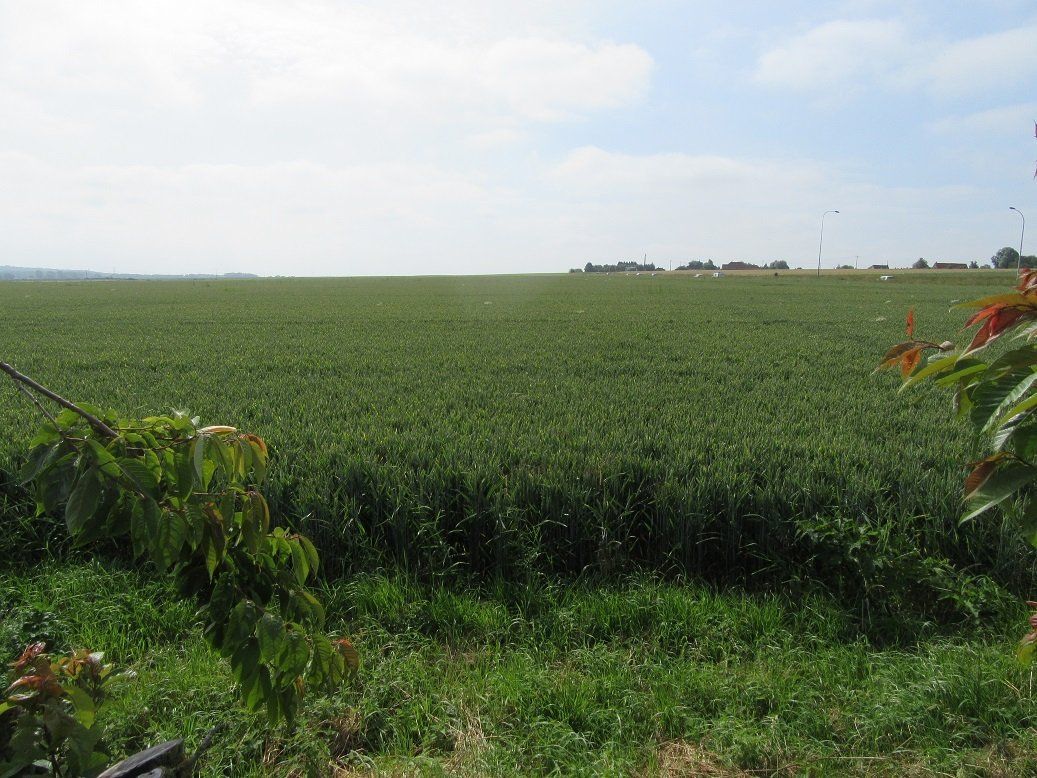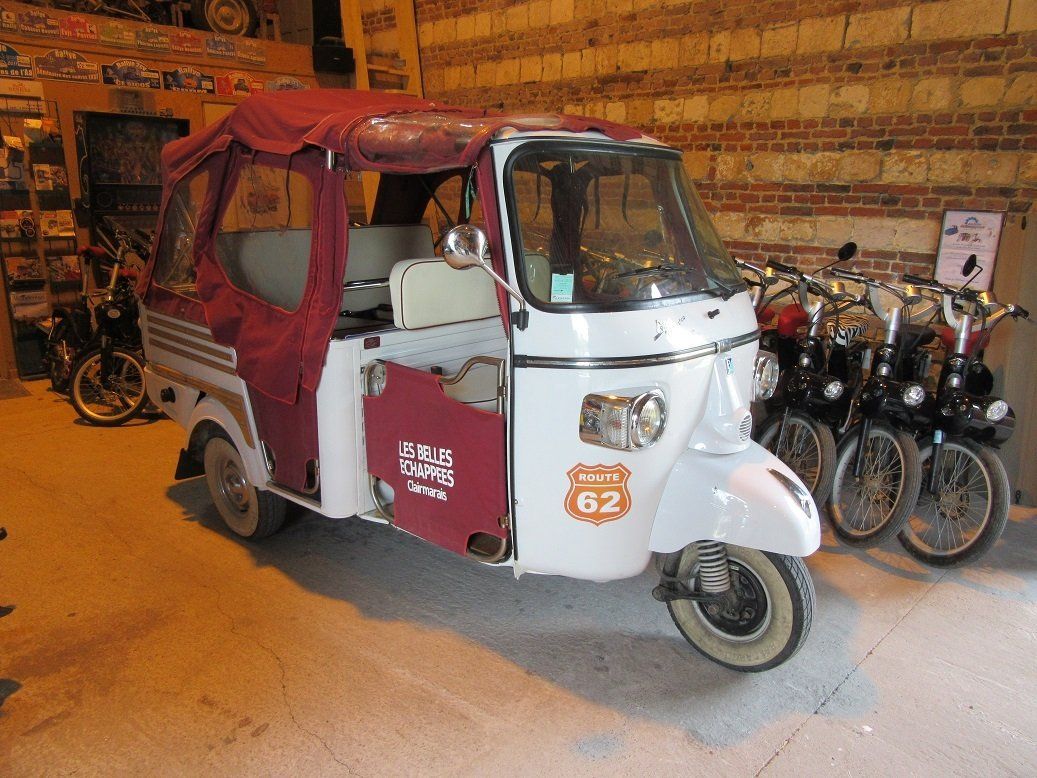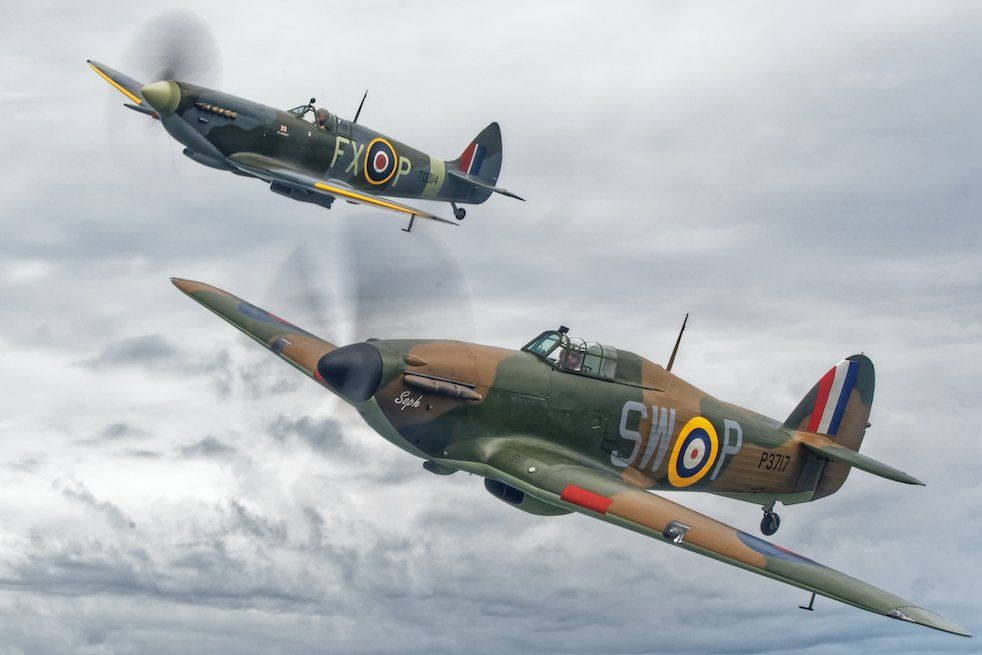
Row of vintage hire vehicles.
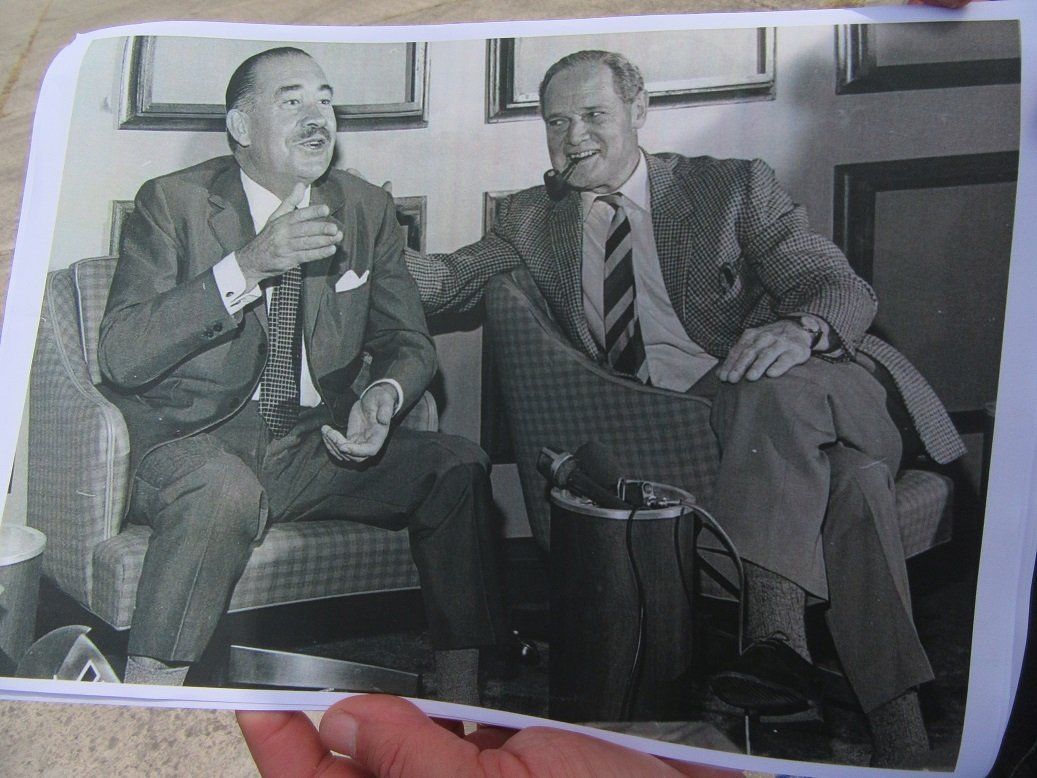
Photo with Galland courtesy BBC.
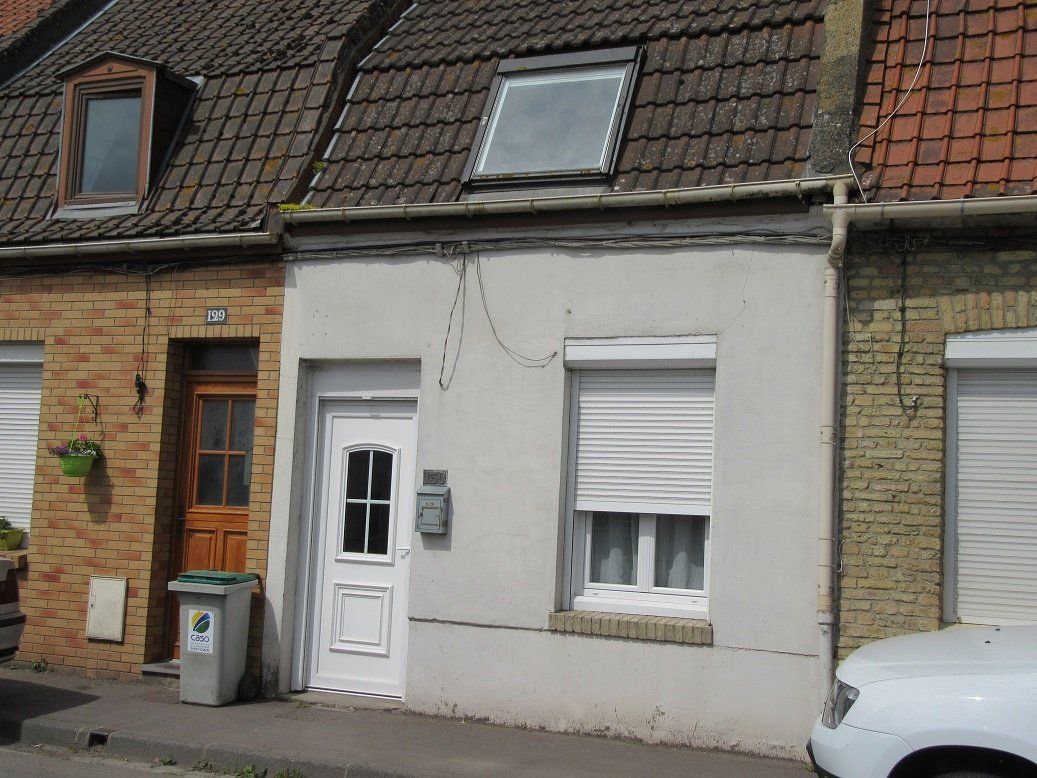
Safe house where Bader was recaptured
Douglas Bader in France
Vintage Cars and Campers, Bicycles and Bader.
I set off to France a few years ago with some of my friends and colleagues. The visit would turn into something of a little adventure for all of us. We were introduced to a vehicle hire company close to St. Omer in Nord, pas de Calais. They title themselves as Les Belles Echappees. Their business was located within the elegant and peaceful Ferm de L’Abbay at Clairmarais. This family run organisation had invested in restoring many classic vintage vehicles and making them available for public hire. There were a few sparkling and freshly prepared VW camper vans, prestigious Citroen 2CV cars and VW convertible Beetles. There was a perfectly presented three wheel Indian style Tuk Tuk and many gleaming battery powered humble bicycles. All were available to hire quite freely to enjoy travels of the local area or further afield.
My friends and I though, were to be accompanied by a guide. His name was Phillipe. He would come with us on a special visit locally as we all took our turn at driving our sparkling, yet ageing, VW camper van. No powered steering, synchromesh gears, soft suspension or firm brakes for us during the next couple of hours. All of the conveyances came from an era that existed 50 or 60 years ago. All of this, as it turned out, was rather appropriate. We were headed into the 1940’s world of the legendary legless fighter pilot, Douglas Bader, RAF. He had emerged as a very real component of present day French culture as the British Royal Air Force celebrated its centenary year. The RAF was born at St. Omer aerodrome on April 01, 1918.
Group Captain Douglas Bader was born in London on February 21, 1910 and joined the RAF Cadet College at Cranwell to become a pilot in 1928. He was a determined and somewhat antagonistic man who was not going to miss out on anything in his life. Shortly after his flying training he rather recklessly indulged in some aerobatic demonstrations. He crashed his aircraft, was very badly injured and lost both of his legs. That was really just the start of his story. The Air Force decided at the time that that was the end of a promising career for Bader in Fighter Command. He had other ideas though. He fought back stoically and with the outbreak of WW2 he returned to flying in the air force. He became a squadron Commander and fought tirelessly during the battle of France and the Battle of Britain in Hurricane and Spitfire aircraft with the aid of his artificial tin legs. He became a legend amongst his colleagues and countrymen and is nowadays emerging under the same sort of style in France. Everyone has surely heard of him.
Douglas Bader was shot down by accidental friendly fire over northern France in August 1941. He bailed out of his aircraft but had to leave one of his trapped artificial legs behind in the cockpit. He was taken prisoner and sent to a hospital in nearby St. Omer to recover from his injuries. His German captors treated him with great respect and courtesy as they had become aware of his legendary status. We were directed by Phillipe to drive the camper van to the spot where Bader parachuted out of his aircraft. It was in open countryside close to the village of Blaringhem between Bethune and St.Omer. These days, of course, the area is just gentle, rolling, peaceful countryside. The features were beautiful in the bright sunshine.
We changed drivers and headed for the hospital in St. Omer where Douglas was taken to recuperate. The Germans agreed that a replacement prosthetic leg could be dropped for Bader by the British on one of their regular bombing raids. He was reunited with it whilst making preparations for his escape back to England. A French house maid at the hospital was able to arrange for the pilot to be taken by a special Resistance agent to a safe house on the edge of St. Omer in the suburb of Le Haut Pont. Bader escaped one night from the hospital using knotted sheets and met the agent at a predetermined spot. There was a walk of nearly two miles that Bader faced as he endured intense discomfort after his accident. The courageous agent had to carry Douglas on his back at one point due to the intense pain on a cold and dark night but they made it to the refuge. We were able to view the second floor hospital window that Douglas Bader escaped from. Nowadays it has been bricked over. The next stop for us in the VW camper was to be the safe house that still exists as an occupied residence.
The house in 1941 was occupied by a loyal French married couple called Mr and Mrs Hiecques. They received Bader and led him to an out building behind their house which should have provided temporary cover from the searching German soldiers. A neighbour, however, overheard clanking noises from Bader’s metal legs and drew her own conclusion. She reported the matter to the occupying forces and Bader was recaptured. He spent the rest of the war as a POW and ultimately was sent to the grim and secure prison at Colditz castle in Germany.
We parked outside the safe house just on the edge St. Omer and took some photographs. The house is very modest and lies along the side of the main street. We were greeted with a wry smile by a modern lady as she was leaving the house to go to her car. How so different for all of us compared to the ghastly days of French occupation during WW2. The Hiecques couple at the time and the loyal house maid at the hospital spent the remainder of the war in a labour camp in Germany as punishment. They all survived their dreadful experience.
During the early period of Bader’s imprisonment, he was visited by General Adolf Galland, a highly decorated German fighter pilot. They became lifetime friends and met again after the war when Douglas Bader was the subject of the popular TV programme ‘This is your life’ hosted by Eamon Andrews. They are both pictured in the BBC photograph. Douglas Bader died on 5th September in 1982 at the age of 72. He had a heart attack that was almost certainly due to the extraordinary pain and discomfort that he had suffered for so much of his life.
Bader has always been treated as a legendary hero by the British and now is being held in similar regard by the French as well. He has become a part of the historical wartime culture of northern France. He was able to use his grit, determination and tenacity to serve the allied forces so well during the dark days of WW2. His controlled aggression got him through his proud life.
We changed drivers again in our splendid camper van and headed back to the hire company base at Clairmarais. Oddly, the vintage of our vehicle and Douglas Bader seemed to blend so well together in northern France where so much of their history was intertwined. It was a strange experience for us all reminding us how much life has changed during the years since the war. There is nowadays a greater cultural link emerging between Britain and France connected so much with the centenary year of the Royal Air Force that began its history at St. Omer. We shared the sense of it all with Phillipe.
It was something of a relief to return the dear VW camper van to its owners. It was wonderful to get back into our modern day Renault coach to find the suspension soft, the steering powered and the brakes powerful again. Go back in time a little and try it all for yourself.
Bob Lyons February 2022
Place where Bader was shot down Indian style Tuk Tuk Spitfire and Hurricane

